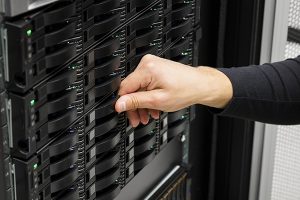
This is the second in an ongoing series of quick information technology tips that we're going to be posting.
SSD Hard Drives
Hard drives fail. They do. Eventually, all of them will. Currently we have a lot of clients with 4-5 year old Dell workstations that are starting to feel a little creaky. The drives are starting to fail and many of them are running Windows XP and thus need to be upgraded soon.
One option is to buy a brand new computer, but some of our clients have opted instead to replace the old hard drives in their workstations with new SSD hard drives and install a more modern version of Windows on those.
What's an SSD?
SSD stands for "Solid State Drive" and, to oversimplify a bit, an SSD hard drive it sort of like a really big flash drive. Unlike conventional drives SSD drives don't have motors and spinning platters. They're dramatically faster than conventional drives, quieter, generate less heat (no moving parts), and they even use less electricity.
Sounds Great! Why Don't We Just Use Them for Everything?!?
Well, there are two main reasons why SSDs still have limited adoption.
1. Price per GB. Though prices have dropped dramatically recently SSD hard drives are still more expensive than conventional hard drives at the same capacity. Plus while it's getting hard to find a conventional hard drive smaller than 1TB, SSD drives larger than a few hundred GB are still a little harder to find.
2. Reliability. SSD drives have traditionally suffered from concerns about how long they would hold up under sustained heavy loads. It wasn't that they'd fail in a week...but rather people were concerned that they might last 3-5 years instead of the 4-6+ years you usually get out of a conventional hard drive.
So Should I Use Them Or Not?
In fact both of those issues with SSDs are getting better all the time. Today you can easily get a 250GB SSD drive (like this Samsung) for less than $80. 250GB is plenty for most business workstations, especially now that we're increasingly storing our data on networks and in the Cloud.
And manufacturers have done a lot to improve the reliability of the drives. With modern SSD hard drives I have no concern about the longevity of the drive in a typical business workstation.
Replacing a conventional drive with an SSD is a great way to dramatically improve the performance and add 18-36 months to the life of an otherwise o.k. workstation.
I run an SSD as the C: drive in my desktop and the chances are good you should too.
Got questions? Give me a call at 928-526-3970, Extension 101, reach out via email or on Twitter. And if you need help with your business technology in Flagstaff, Astoria, Honolulu or elsewhere please feel free to contact us.




